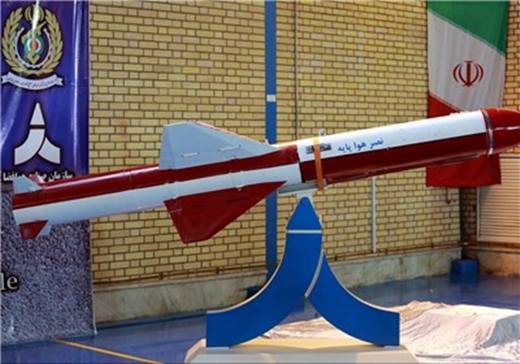Iran started producing the air-launched version of its homegrown cruise missile Nasr (Victory) in the assembly line.
Speaking on the sidelines of a ceremony to inaugurate the production line of the cruise missile on Tuesday, Defense Minister Brigadier General Hossein Dehghan said the mass production of Nasr missile is part of the country’s strategy to enhance its missile capabilities and upgrade its deterrent power.
Nasr had been originally designed and manufactured as an anti-ship cruise missile, but the country’s experts managed to upgrade it to be employed for aerial missions.
According to the minister, the air-launched version of Nasr can be mounted on different types of fighter jets.
The missile does not need any additional guided controls, allowing the warplane to immediately leave the danger zone after launching the projectile, Dehghan explained.
Thanks to its radar tracking system, Nasr can hit the targets with high precision, he added.
The new achievement “dramatically boosts the operational and tactical capabilities” of the Army and IRGC air forces, Dehghan said.
The minister also noted that plans are underway to install the air-launched cruise missile on unmanned aerial vehicles (UAVs).
Iran unveiled the air-launched version of Qader (Capable) and Nasr cruise missiles in September 2013. They are capable of hitting targets within a range of 200 km and 35 km, respectively.
The main features of the missiles are quick preparation capability, usefulness in low-altitude flights, high precision in hitting targets, particularly naval vessels, great destructive power and resistance to radio disruption tactics.
